81 F. high in the Twin Cities Friday.
84 F. average high on July 11.
86 F. high on July 11, 2013.
1.03" rain fell at MSP International Airport yesterday.
July 11, 1863: Cool wave across state. Frost in Twin Cities area.
Son of Polar Vortex (Summer Edition)
Live
long enough and you'll see (almost) everything. Since moving here in
'83 I've experienced nearly 100 inches of snow in a single winter
('83-84), KARE-11's helicopter tracking a tornado from beginning to end
('86), the '87 "Superstorm", withering drought in '88, a family of
blizzards in '94, a $2 billion hail damage year ('98), 145 Minnesota
tornadoes in 2010, most in the USA, the hottest year in recorded history
('12), then the recent Polar Vortex and wettest month ever recorded
(June '14).
That's enough.
That said, I've NEVER given a
wind chill report in mid-July. That may be about to change. The good
news: no frost (or flurries!), but a stiff northwest wind will make
Monday's "high" of 63F feel like 54F. An extra layer or two during the
hottest week of summer, on average?
What happened to average.
Monday
should break a record for the coolest high on July 14, set in 1884. I
suspect we'll set a record for chilliest MLB All-Star Game Tuesday
evening, as temperatures sink thru the low 60s. Expect 40s up north;
furnaces will click on. You may do a double-take glancing up at the
calendar. Good news: toasty 80s return late next week.
I'm sure enjoying the new normal.
* graphic credit: upper left: Climate Reanalyzer; upper right: Weather Bell temperature anomalies for 18z Monday.
Arthur's Revenge?
As the soggy, extra-tropical remains of Hurricane Arthur accelerated
into the Canadian Maritimes it may have helped to dislodge unusually
chilly air near James Bay, a vast counterclockwise flow rotating brisk
air southward. NOAA's NAM 2-meter temperature forecast shows
record-setting chill plowing into the Upper Mississippi Valley and
Dakotas by Monday and Tuesday. Loop: HAMweather.
A/C Optional.
Canada will provide all the fresh air you could ever want from Sunday
into the middle of next week; a record (chilly) high temperature all but
inevitable on Monday (old record is 68F in 1884) and I believe
Tuesday's MLB All-Star Game will be the coolest ever played, at least
since 1980 with low to mid 60s by gametime under a partly cloudy sky and
a brisk breeze from the northwest. Take a light jacket or Twins
sweatshirt. We warm up later next week; more 80s before T-storms return
next weekend. Of course.
Cool Start To July. Dr. Mark Seeley has some interesting nuggets in this week's edition of
Minnesota WeatherTalk; here's an excerpt: "...
The
month of July has started cool with most observers reporting average
temperature for the month that ranges from 2-4 degrees F cooler than
normal. Eight of the first ten days of the month were cooler than normal
at Rochester, for example. Statewide this is the coldest first ten days
of July since 2009. Some observers have reported daily record values of
temperature. Starting on July 1st a few locations reported new record
cold high temperature values for the date including a high of just 57
degrees F at Crookston and Tamarac Wildlfe Refuge, and a high of only 63
degrees F at Wheaton. On July 3rd Brimson (St Louis County) reported a
new record minimum temperature of 36 degrees F, as did Long Prairie
(Todd County) with a record minimum of 41 degrees F..."
MLB All-Star Weather Factoids. From Media Logic Group meteorologist D.J. Kayser:
Weather conditions for first pitch are available from official box scores on
Baseball Reference.
A good note, not every box score lists weather conditions. The vast
majority have it, however, since the League Divisional Series started in
the 90s. I went back to 1980, and the weather listed for the start of
the game is included (if it wasn't "Unknown") in the attachment.
Since 1980, there have been 4 games with
documented starting weather that had a gametime temp of 68°
- 1990 - Wrigley Field (Chicago)
- 1999 - Fenway Park (Boston)
- 2002 - Miller Park (Milwaukee)
- 2007 - AT&T Park (San Francisco)
Since 1980, there have been no documented games with a gametime temp of below 68°.
How Data Helps Contain Wildfires. I thought this story at
Dell's Tech Page One was interesting; here's a clip: "...
Nevada,
Oregon, Washington and Idaho are likely to burn this season too,
according to Delgado’s predictive data. Every morning, he briefs
officials so they can decide where to move resources around the country
to protect property and save lives. The data focuses on the three
elements of the wildfire triangle: heat, fuel and oxygen. There also are
variables such as topography, the type of combustible material each
season and the weather..."
So What Do You Know About Hurricanes.
Metro Jacksonville has a terrific infographic with a few surprises: "
Considering
it's hurricane season, Metro Jacksonville shares a Global Data Vault
infographic featuring data provided by the Federal Emergency Management
Agency (FEMA)."
NASA Spots a Super Typhoon.
National Geographic has a post about "Neoguri", captured by the ISS, The International Space Station: "
Watch out, Japan!" said European Space Agency astronaut Alexander Gerst after taking this July 7 picture
of Supertyphoon Neoguri from the International Space Station. The
supertyphoon lashed Okinawa this week, and at the time the photo was
taken, was producing 150-mile-an-hour (240-kilometer-an-hour) winds..."
Photograph by Alexander Gerst, ESA/NASA.
Upgraded HWRF and GFDL Hurricane Models Excelled During Hurricane Arthur. Weather Underground has a good summary of how NOAA's enhanced, recently upgraded high-resolution models just performed; here's an excerpt: "
The
landfall last week of Hurricane Arthur, the first named tropical system
in the Atlantic for 2014, brought a quick start to this year’s
hurricane season. Perhaps lost in the predictions and preparations for
Arthur’s landfall was the fact that there have been major upgrades this
year to the two operational National Weather Service (NWS)
regional hurricane prediction systems, the GFDL and HWRF models. Here
we will provide background on each of those models and highlight the
forecast improvements achieved from recent upgrades to both models..."
Image credit above: "
Inner
core structure of Hurricane Katrina of 2005 simulated from the GFDL
hurricane forecast model. Sea Surface Temperatures (SST) are denoted by
the color shading, with the darker colors of blue showing the cooling of
the SSTs due to the hurricane winds mixing the cooler waters from below
to the surface."
 Exclusive: Coastal Flooding Has Surged In U.S., Reuters Finds
Exclusive: Coastal Flooding Has Surged In U.S., Reuters Finds. Here's an excerpt of an eye-opening story from Reuters at
The Chicago Tribune: "...
During
the past four decades, the number of days a year that tidal waters
reached or exceeded National Oceanic and Atmospheric Administration
flood thresholds more than tripled in many places, the analysis found.
At flood threshold, water can begin to pool on streets. As it rises
farther, it can close roads, damage property and overwhelm drainage
systems. Since 2001, water has reached flood levels an average of 20
days or more a year in Annapolis, Maryland; Wilmington, North Carolina;
Washington, D.C.; Atlantic City, New Jersey; Sandy Hook, New Jersey; and
Charleston, South Carolina. Before 1971, none of those locations
averaged more than five days a year. Annapolis had the highest average
number of days a year above flood thresholds since 2001, at 34..."
Hurricane Storm-Surge Risks to Property Rise on Atlantic, Gulf Coasts, Study Finds. Here's the intro to a story at
The Wall Street Journal: "
More
than 6.5 million homes along the Atlantic and Gulf coasts are at risk
of hurricane storm-surge damage, with New York City having the most
homes and value at risk, according to a new report released Thursday by a
company that analyzes property values. The study by CoreLogic found
that the vulnerable homes represent $1.5 trillion in potential
reconstruction costs, with nearly two-thirds - $986 billion - of that
risk concentrated in 15 metro areas..." (File image: USGS).
How To Protect Your Vacation During Hurricane Season 2014. There's some useful information for anyone planning a trip to the shore in the coming months; here's an excerpt from
motoemag.com: "...
Travel Insured,
a leading travel insurance company, wants to remind travelers that even
if the planned destination is not within the hurricane path, hurricanes
can greatly affect travel and flight schedules at airports all over the
country. While an insurance plan solely for the disruption of a
hurricane is not available, purchasing a plan with coverage that
protects the inconveniences that hurricanes can cause can be helpful.
Check out some of the best tips dealing with travel insurance coverage
that people might often overlook..."
Study Provides New Approach to Forecast Hurricane Intensity.
Predicting hurricane intensity is much more challenging than
forecasting track; here's an excerpt of a story focused on new research
from
The University of Miami: "
New
research from University of Miami (UM) Rosenstiel School of Marine and
Atmospheric Science suggests that physical conditions at the air-sea
interface, where the ocean and atmosphere meet, is a key component to
improve forecast models. The study offers a new method to aid in storm
intensity prediction of hurricanes. “The general assumption has been
that the large density difference between the ocean and atmosphere makes
that interface too stable to effect storm intensity,” said Brian Haus,
UM Rosenstiel School professor of ocean sciences and co-author of the
study. “In this study we show that a type of instability may help
explain rapid intensification of some tropical storms...”
Data and Analytics Try To Limit Hurricane Damage. Dell Computer
has an interesting guest post about the power of analytics and models
to get a better handle on which communities in Hurricane Alley are most
vulnerable, and how much cash to set aside for a rainy (windy) day.
Here's a clip: "...
With every new hurricane that makes landfall in
the U.S., advanced catastrophe modeling and analytics allow
property-casualty carriers to more accurately price a homeowners
insurance policy. Models also help insurance carriers
calculate the amount of capital they need to set aside in reserve to
pay claims and how many catastrophe insurance policies insurers can
afford to reinsure. Catastrophe models help insurance companies plan
ahead and serve as a tool that contributes to the industry allocating
capital more efficiently, Larsen says..." (File image: EPA).
What Is Causing The Kidney Stone Epidemic? Staying hydrated in the (increasing) heat is everything; here's an excerpt from
io9.com: "
Pediatric
urologist Gregory Tasian and his team analyzed over 60,000 medical
records of people with kidney stones in major cities throughout the U.S.
What they found was that people were more likely to develop the painful
calcium deposits (pictured above) in their kidneys when average
temperatures rose over 50 degrees. In fact, many cases of kidney stones
cropped up roughly three days after a hot day. Now that climate change
means that some regions of the globe are heating up, it's likely that
kidney stones will become even more common..."
Map: Every U.S. Hot Car Child Death in 2014.
HLNtv.com
has details on every one of the 16 hot weather-related child deaths in
the USA so far this year. It's worth reminding (everyone) that you can't
leave kids in a hot car, even for a minute or two, this time of year.
Flooded and Coming Back Stronger. I came across an amazing article about last year's devastating flood in Boulder, Colorado that's worth a look. Check it out in
Headwaters: Colorado Foundation for Water Education.
It's Hurricane Season. Too Bad The Fed's Aircraft Fleet for Tracking Them Is Kind Of A Mess. Jill Aitoro has the story at
The Washington Business Journal; here's a highlight: "...
So what’s the problem? As reported by the Government Accountability Office,
they’re overburdened. And they’re old. NOAA’s aircraft fly
approximately 3,800 to 5,200 flight hours per year. And although most
hurricane reconnaissance is conducted by Air Force aircraft, NOAA is
required to make its P-3 Orion aircraft available if the Air Force is
unable to meet the reconnaissance needs posed by severe weather events.
One of NOAA’s two operating P-3 Orion planes must be configured and
available to conduct reconnaissance each hurricane season from June 1 to
November 30, the GAO noted, and the other P-3 Orion must be available
from July 15 to Sept. 30. During these months, the P-3 Orion planes are
generally not available for other uses...."
File image: AP.
Net-Zero Energy Test Home Ends Year-Long Study With Surplus Energy.
When people start saving green by going green renewables will become
mainstream. With Moore's Law and big price drops It's only a matter of
time. Here's an excerpt from
gizmag.com: "
Braving a harsh winter with snow-covered solar panels, the Net-Zero Energy Residential Test Facility
(NZERTF) in Washington DC has come up trumps in a year-long study of
its energy harvesting capabilities. Located on campus at the National
Institute of Standards and Technology (NIST), researchers used computer
simulation to replicate the energy consumption of a family of four. At
the end of its first 12 months, there was a large enough surplus to
power an electric car for 1,440 miles (2,317 km)..."
Bingeing on Bad News Can Fuel Daily Stress.
After reading the previous story about bees I'm kind of depressed. This
may not come as a shock (to anyone), but if you immerse yourself in a
steady drumbeat of negativity and gloomy news, it probably won't help
your stress levels. Here's a clip from
NPR: "
If
you're feeling stressed these days, the news media may be partly to
blame. At least that's the suggestion of conducted by NPR, the Robert
Wood Johnson Foundation and the Harvard School of Public Health. The
survey of more than 2,500 Americans found that about 1 in 4 said they
had experienced a "great deal" of stress in the previous month. And
these stressed-out people said one of the biggest contributors to their
day-to-day stress was watching, reading or listening to the news..."
Illustration:
Katherine Streeter for NPR.
The Post-Post Apocalyptic Detroit.
It's hard not to root for the people of Detroit at this point; I sure
wouldn't bet against them pulling the city back from the brink. The New York Times has a fascinating story; here's an excerpt: "...The
belief in Detroit’s imminent revival has spread far beyond Dan Gilbert
and the skyscrapers of downtown. Out in the neighborhoods, there is a
legion of mini-Gilberts, longtime Detroiters and recent transplants
alike, who have united around a conviction that the city has fallen as
far as it can go — that the time to buy in is at hand. Just a couple of
years after Detroit slid into what the national news media incessantly
called a “post-apocalyptic” collapse, the city now teems with a
post-post-apocalyptic optimism..."
Photo credit above: "
A view of Detroit from G.M.'s Renaissance Center."
Credit Andrew Moore for The New York Times.
Say It Isn't So - World's Largest Mall Slated for Dubai.
It should be noted that Dubai already has 52 malls, each with it's own
magazine. Because they do BIG THINGS in Dubai. Maybe our Mall of America
can expand into MSP International to keep us in the hunt. Gizmag has more details: "...Dubai
Holding hasn't revealed firm dates nor a budget for the project yet,
but we do know some basic information. It comprises 743,224 sq m (8
million sq ft) of floorspace, which makes it easily the largest mall in
the world, a shade larger than China's Forbidden City, and about four
times the size of France's Louvre Palace..."
Every State in the USA, Ranked by it's Food/Drink. Minnesota ranked 23rd out of 50 states. Really? Here's an excerpt of a sure-to-be-controversial story at
Thrillist: "...
Surly’s was at the forefront of a damn fine brewing scene, but really this ranking is about the glorious innovation that is the Juicy Lucy.
Any chump can melt cheese ON a burger, but it takes vision to put it
INSIDE the burger. For such achievements you get a pass on that
suspect-looking hot dish stuff..."
Amazon Asks FAA For Permission to Fly Drones. Some-day delivery within 30 minutes? Like a vending machine in the sky.
The Associated Press has the story; here's a clip: "...
In
a letter to the FAA dated Wednesday, Amazon said it is developing
aerial vehicles as part of Amazon Prime Air. The aircraft can travel
over 50 miles per hour and carry loads of up to 5 pounds. About 86
percent of Amazon's deliveries are 5 pounds or less, the company said.
"We believe customers will love it, and we are committed to making Prime
Air available to customers worldwide as soon as we are permitted to do
so," Amazon said in the letter..." (Image credit: amazon.com).
TODAY: Few T-storms southern MN early; sunnier central and northern MN. Winds: NW 5-10. High: 81
SATURDAY NIGHT: Partial clearing. Low: 65
SUNDAY: Partly sunny, cooler breeze. Dew point: 51. High: 76
MONDAY: Typical for Oct. 6. Clouds, showers. Wake-up: 59. High: 63 (old record cool high is 68 in 1884)
TUESDAY: MLB: All-Stars in layers? Wind chill (sorry): 57. Wake-up: 56. High: 67
WEDNESDAY: Sunny, pretty close to perfect. Dew point: 45. Wake-up: 55. High: 74
THURSDAY: Warm sunshine, July-ish again. Wake-up: 58. High: near 80
FRIDAY: Sunny. Plenty of summer left. Really. Wake-up: 62. High: 84
Climate Stories....
"But There's Been No Warming Since 1998!"
Global surface temperatures have plateaued, but the oceans continue to
warm, in fact more than 90% of all warming is going into the world's
oceans. Here's an excerpt from
The Union of Concerned Scientists: "..
.Focusing
on relatively short time periods to claim global warming is not
happening is a misleading way to use statistics. These false claims have
become so persistent that late last year the Associated Press asked a
team of independent statisticians to review global temperature data
without revealing to them what the data represented.[5] All of the statisticians concluded that the data showed an unmistakable upward trend over time..."
In Las Vegas Climate Change Deniers Regroup, Vow to Keep Doubt Alive. Bloomberg Businessweek has the story; here's the introduction: "
Earlier
this week, the Heartland Institute convened its Ninth International
Climate Change Conference in Las Vegas. A nonprofit, free-market think
tank in Chicago with a $6 million annual budget, Heartland has been
hosting conferences since 2008 for those dubious of the science
confirming human-caused climate change. It is called the ICCC for short,
the acronym an intentional echo of the IPCC, the Intergovernmental
Panel on Climate Change, an international body that has published the
most comprehensive studies of global warming..."
Image credit above: Chester Higgins Jr./The New York Times via Redux. "The Greener Horizon booth at the 2009 International Conference on Climate Change."
Global Warming Interactive. How Hot Will Your City Get? By
the end of the 21st century, if there is no concerted global effort to
reduce greenhouse gas emissions, summers may be unrecognizable across
muc of the USA, according to Climate Central and
InsideClimate News; here's an excerpt: "...
According
to the research, U.S. cities could be up to 12 degrees Fahrenheit
hotter than they are today by 2100. St. Paul, Minnesota could feel like
Dallas, Texas. Las Vegas could feel like places in Saudi Arabia, with
average temperatures of 111 degrees Fahrenheit. Phoenix could feel like
Kuwait City, one of the hottest cities in the world, with average
temperatures of 114 degrees Fahrenheit..."
Global Warming Creates Arctic Shipping Route Opportunity. Less ice up north? Here's one silver lining: we can ship stuff faster!
Euronews has the video and story; here's an excerpt: "
Japan’s Mitsui O.S.K. Lines says it going to run the first ever regular commercial shipping route through the Arctic Ocean. Starting in 2018 it plans to initially move liquefied natural gas from the huge LNG plant Russian is to build on the Yamal Peninsula to markets in Europe and Asia. In a joint venture with China Shipping, it will use three icebreakers, which have been ordered from South Korea’s Daewoo..."
Climate Change Solution: Scrap Subsidies, Fund Innovation.
Seems like a good idea to me, although we've been subsidizing dirty
fossil fuels for a long time, and continue to do so as a nation. Here's
an excerpt from
The Christian Science Monitor: "
Ahead
of next year's Paris climate talks, it's time for a new approach to
climate change that supports making clean energy cheaper than fossil
fuels without subsidies, writes Matthew Stepp of the Center for Clean
Energy Innovation. The only way to do that is with more innovation..."


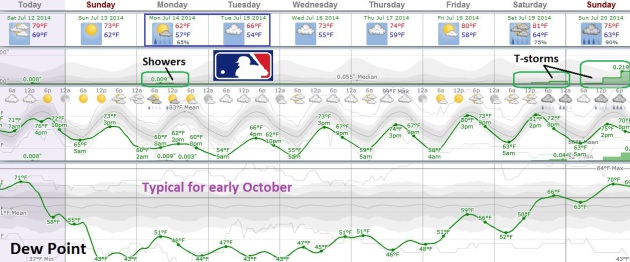
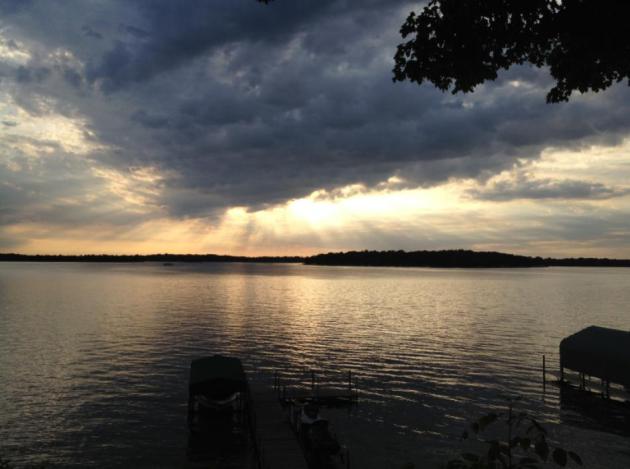

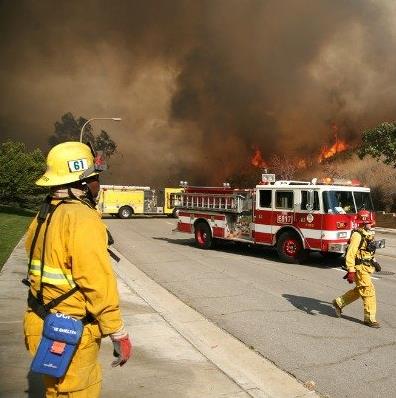

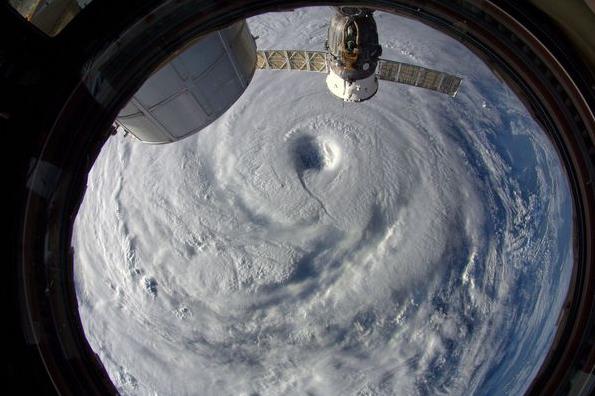

.jpg)
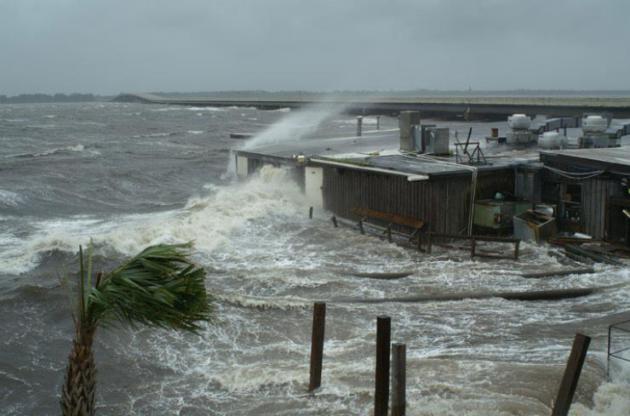
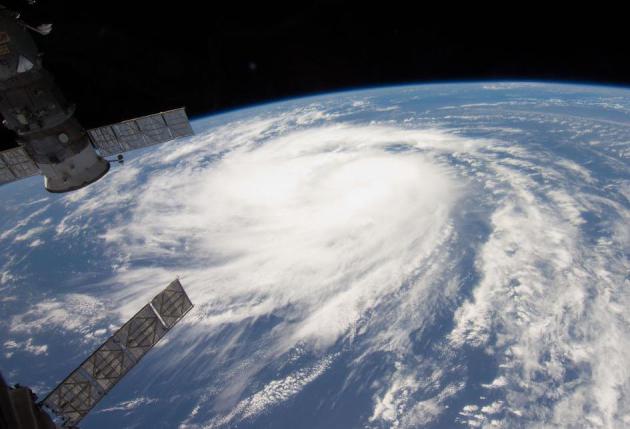

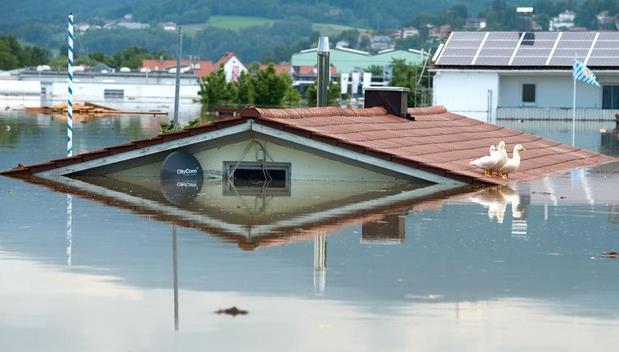



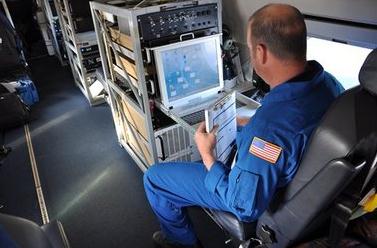

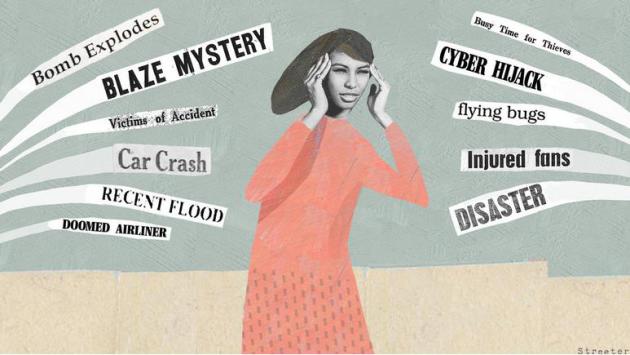



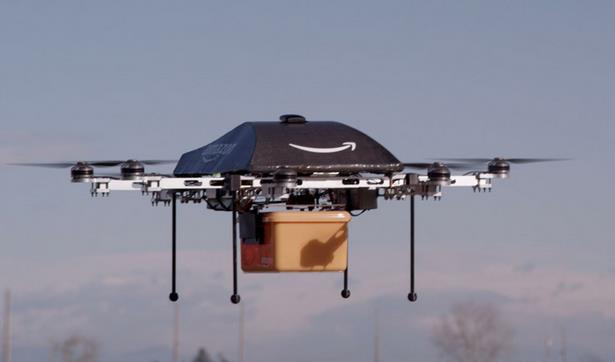
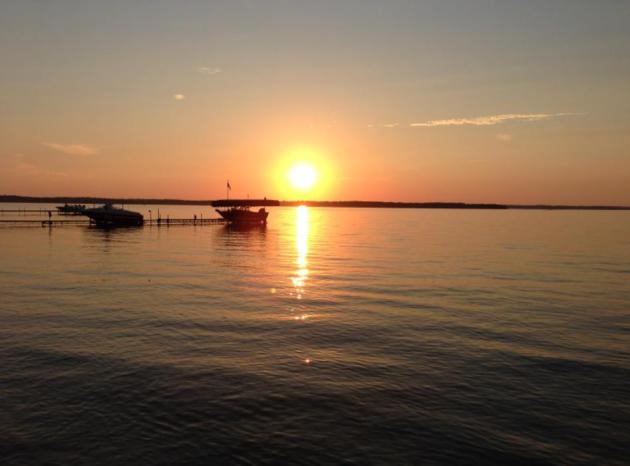
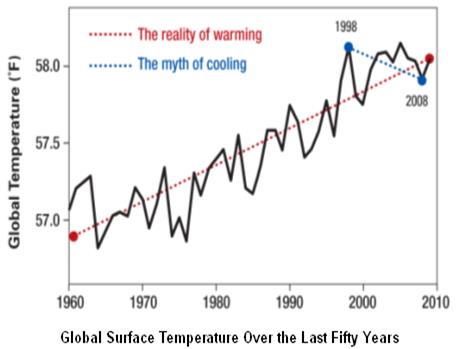

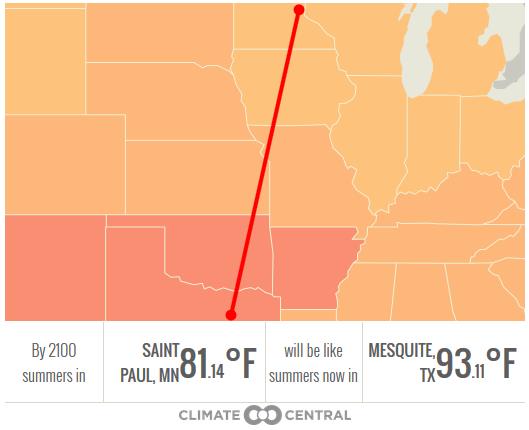


No comments:
Post a Comment